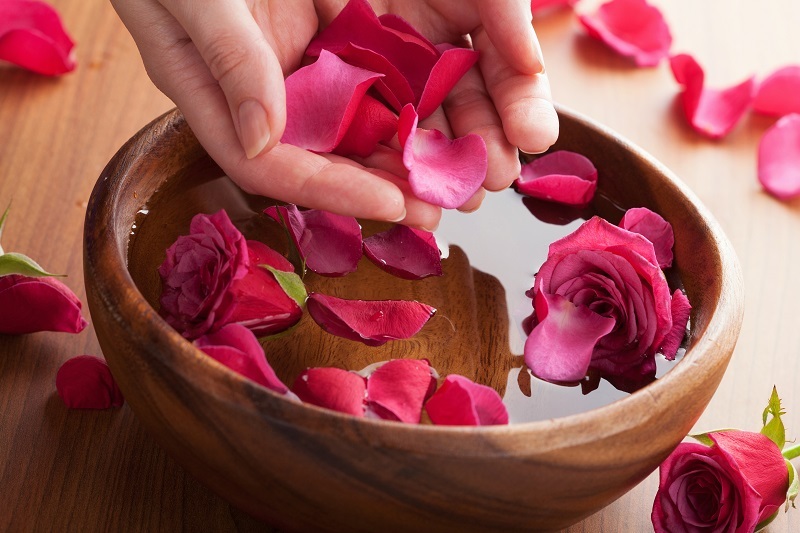Effortlessly Extend the Bloom Time of Poinsettias
Posted on 31/08/2025
Effortlessly Extend the Bloom Time of Poinsettias: A Comprehensive Guide
Poinsettias (Euphorbia pulcherrima) are cherished for their vibrant, star-shaped bracts and their classic beauty during the festive season. Yet, many plant lovers wonder how to extend the bloom time of poinsettias and keep them looking spectacular well beyond the holidays. This complete guide walks you through the best methods to maximize the blooming period, maintain healthy plants, and enjoy those iconic red, pink, or white displays for months.
Understanding the Bloom Cycle of Poinsettias
To prolong the bloom of poinsettias, it's essential to grasp their natural flowering cycle. Poinsettias are short-day plants, meaning they initiate flowering when daylight hours decrease. In nature, they bloom in winter, responding to the shorter days and longer nights.
- Buds form in October-November: Poinsettias require 14-16 hours of darkness each night for at least 8-10 weeks to set colorful bracts.
- Blooms peak in December: With proper care, their vivid displays last 4-8 weeks, but with diligent attention, you can extend poinsettia flowering well into spring.
What Are the "Blooms" of Poinsettias?
It's a common misconception that the brightly colored portions are flowers. In reality, the "bloom" is made up of modified leaves called bracts. The actual flowers are the small yellow clusters (cyathia) at the center.

Key Principles to Effortlessly Extend Poinsettia Bloom Time
To extend the poinsettia blooming period, the following care principles are critical:
- Provide optimal light - but avoid direct, hot sunlight
- Maintain consistent temperature
- Water properly - never too dry or soggy
- Avoid exposure to drafts and heating vents
- Control humidity
- Feed appropriately after bract coloration fades
- Minimize stress by limiting movement
Let's dive deeper into each care aspect to prolong poinsettia bloom in your home or office.
1. Mastering Light for Long-Lasting Poinsettia Blooms
The Importance of Proper Illumination
During the flowering phase, it's vital to place your poinsettia in a location with bright, indirect sunlight for at least 6 hours daily. Too much direct sun can scorch bracts, while insufficient light leads to leaf drop and faded color.
- East or west-facing windows are ideal; provide shade from midday sun.
- Rotate the plant periodically to ensure all sides receive equal light, which helps maintain a symmetrical and lush appearance.
- Avoid moving poinsettias from place to place--sudden changes in light can stress the plant and shorten the bloom period.
Managing Short Day Requirements
If you wish to rebloom poinsettias for future seasons, you'll need to simulate their natural dark period starting in autumn. However, while blooming, a consistent light environment supports longer-lasting color.
2. Control Temperature to Maximize Poinsettia Flowering
Temperature is a critical factor in extending poinsettia bloom time. These tropical natives prefer warmth but dislike extremes.
- Daytime: 65-70?F (18-21?C)
- Nighttime: 60-65?F (16-18?C)
- Avoid drops below 55?F (13?C)--cold can shock the plant, leading to leaf and bract loss.
- Keep away from heating vents, fireplaces, and cold drafts, as temperature fluctuations can rapidly shorten blooming.
How Does Temperature Affect Bloom Duration?
Plants maintained at steady, moderate temperatures generally hold their color and bracts much longer. Too much warmth (over 75?F/24?C) can speed up metabolism, causing bracts to fade or drop prematurely.
3. Water Wisely to Prolong Poinsettia Blooming Period
Watering is often where many poinsettia caretakers go wrong. Overwatering causes root rot, while underwatering results in drooping, wilted plants that lose their bracts.
- Check soil moisture regularly--soil should be slightly damp but never soggy.
- Water when the top 1-2 inches of soil feel dry.
- Empty saucers after watering to prevent roots from sitting in water.
- Use room temperature water for best results.
Signs of Watering Problems
- Overwatering: Yellowing lower leaves, soft or mushy stems, wilting without dryness.
- Underwatering: Drooping leaves and bracts, dry soil pulling away from the pot.
If you've overwatered, let the plant dry out partially before watering again. For underwatered plants, soak the root ball thoroughly, then allow excess to drain away.
4. Manage Humidity Levels for Healthy, Happy Poinsettias
Poinsettias thrive in moderate humidity (40-60%). Indoor environments, especially during winter, are often too dry.
- Mist the plant gently with water every few days to boost moisture.
- Group with other plants or set your poinsettia's pot atop a shallow tray of water and pebbles to increase ambient humidity (but don't let pot base touch water directly).
- Avoid placing near radiators or forced-air heaters that dry the air.
Maintaining humidity not only extends flowering but also prevents leaf drop and curling.
5. Feed for Continued Bract Beauty
While actively blooming, poinsettias do not require fertilizer. Once the blooms begin to fade (usually late winter or early spring), start feeding monthly with a balanced, all-purpose houseplant fertilizer diluted to half strength.
- Excess fertilizer during blooming can reduce flower quality--always err on the side of underfeeding while color is at its peak.
- After the holidays, as you encourage new growth, regular feeding supports a robust, vigorous plant.
6. Avoid Common Mistakes That Shorten Bloom Time
The Importance of Stability
Poinsettias dislike disturbance. Every time you move the pot or expose it to drafts, temperature changes, or new light conditions, you risk shortening the life of the blooming bracts.
- Keep the plant in one spot for its entire blooming period.
- If you must move it, do so gently and avoid temperature exposure during transit.
- Check packages for cold exposure if purchasing from a nursery or garden center in winter--avoid plants that were chilled.
Cutting Back and Reblooming: Enjoying Poinsettias Year-Round
With optimum care, some varieties can display colored bracts for up to four months. If you want to rebloom poinsettias for next year, follow these steps:
Post-Bloom Care
- Prune: When most bracts fade, usually March or April, cut the plant back to 6-8 inches tall.
- Water and Feed: Resume regular watering and monthly feeding.
- Optional Repotting: Repot in May to refresh soil and spur new growth.
- Provide more light: Move outdoors in late spring or to a brighter spot indoors.
Inducing Blooms for Next Season
- Starting in late September or early October, cover your poinsettia each evening for at least 14 hours (many use a large box or place in a dark closet).
- Expose to bright daylight during the day.
- Continue for 8-10 weeks. Once bracts gain color, return plant to regular display conditions.
This darkness/light regimen is key to forcing rebloom and enjoying vibrant poinsettias year after year.
Top Tips for Effortlessly Extending Poinsettia Bloom Time
- Inspect poinsettias before purchase--choose those with tight yellow flower clusters (cyathia), which last longer than fully opened ones.
- Acclimate carefully when bringing a plant home in winter--wrap in paper or plastic for protection from the cold.
- Avoid ethylene gas exposure (from fruit or smoke), which accelerates bract drop.
- Maintain consistent routines: Light, water, and location consistency pay off.

Frequently Asked Questions
How long do poinsettia blooms last indoors?
With ideal care, blooms can last 6-8 weeks, and sometimes up to 4 months. Bracts fade as flowers drop; proper care prolongs this colorful period.
Can you keep poinsettias all year round?
Absolutely. Though many treat them as temporary winter decorations, poinsettias are perennial shrubs. With post-bloom pruning and correct regimens, they can rebloom for years.
Should I mist my poinsettia?
Gentle misting helps increase humidity. Avoid soaking bracts or letting water pool in the center of the plant.
How often should I water my poinsettia?
Water when the top inch of soil feels dry. Always empty drainage trays and adjust frequency based on temperature and indoor humidity.
Conclusion: Enjoy Vibrant Poinsettias Beyond the Holidays
Extending the bloom time of poinsettias is easier than you think. By providing steady light, warmth, careful watering, and moderate humidity, you can enjoy flourishing, festive displays for months after the holidays are over. And if you follow the reblooming procedure, your poinsettia can become a lasting, living centerpiece year after year.
With these comprehensive, SEO-optimized tips, you'll never have to say goodbye to your favorite holiday plant too soon. Follow this guide and effortlessly maximize poinsettia bloom longevity for vibrant, healthy, and long-lasting beauty in your home.
Latest Posts
Effortlessly Extend the Bloom Time of Poinsettias
Innovative Strategies for Orchid Care Excellence
Which Flower Embodies Your Personal Aura





